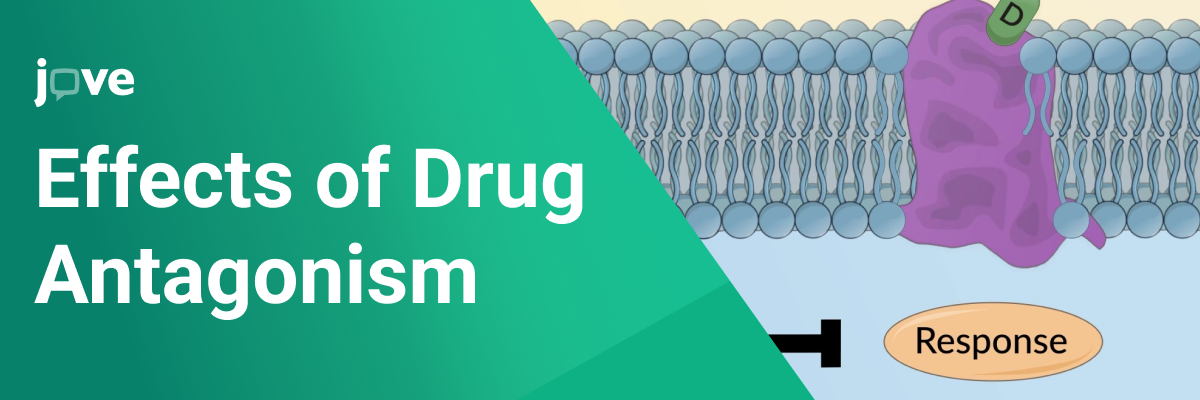In this blog post, we will explore the concept of drug antagonism, a crucial topic in pharmacology. Drug antagonism occurs when the effect of one drug is reduced or completely negated by another drug. Understanding this interaction and the various mechanisms behind it is essential for safe and effective medication management. For detailed explanations and visual demonstrations, visit JoVE.com.
What is Drug Antagonism?
Drug antagonism refers to a situation where the effect of one drug is diminished or negated by the presence of another drug. This interaction can occur through various mechanisms, each classified under different types of antagonism.
The clinical implications of drug antagonism are significant in pharmacotherapy, as they can affect the efficacy and safety of treatments. Understanding these interactions is crucial for healthcare providers to manage potential adverse effects and ensure optimal therapeutic outcomes for patients.
Types of Antagonism in Pharmacology
In pharmacology, antagonism describes the mechanisms by which drugs or substances interfere with or inhibit biological processes, playing a key role in therapeutic interventions. There are several types of antagonism, each defined by the specific method through which they inhibit or alter the effect of agonists at their target sites. Understanding these various forms helps in designing and optimizing treatments for various medical conditions.
-
Chemical Antagonism: Chemical antagonism occurs when two drugs chemically interact to form an inactive compound, neutralizing the effects of one or both drugs.
-
Pharmacological Antagonism: This type involves drugs that have opposite effects on the same physiological process, counteracting each other’s actions.
-
Functional Antagonism: Functional antagonism happens when drugs produce opposite effects through different mechanisms, balancing out the overall physiological impact.
-
Competitive Antagonism: In competitive antagonism, two drugs compete for the same receptor, often leading to one drug inhibiting the effect of another.
-
Non-Competitive Antagonism:Occurs when a drug alters the effectiveness of another by binding to a different site or a different receptor, changing its function.
Implications of Drug Antagonism
Understanding the various types of drug antagonism is essential for effectively managing medication therapies, especially in complex cases involving multiple drugs. Recognizing these interactions can prevent therapeutic failures and adverse reactions, ultimately improving patient care.
How to learn with JoVE.com
For those interested in deepening their understanding of drug antagonism and its various types, JoVE.com offers an invaluable resource. JoVE, the Journal of Visualized Experiments, provides detailed video demonstrations and educational materials that clearly illustrate the concepts of pharmacological interactions, including antagonism. Their specific segment on drug antagonism (available at Combined Effects of Drugs: Antagonism) breaks down complex pharmacological principles into easily digestible content, enhancing both academic learning and practical understanding. This visual and interactive approach is particularly beneficial for students and healthcare professionals seeking to master the nuances of drug interactions and their clinical implications.
Conclusion
The study of drug antagonism is vital in pharmacology, playing a crucial role in the development of safe and effective therapeutic strategies. As our understanding of drug interactions grows, so does our ability to better manage and optimize patient treatment plans.
